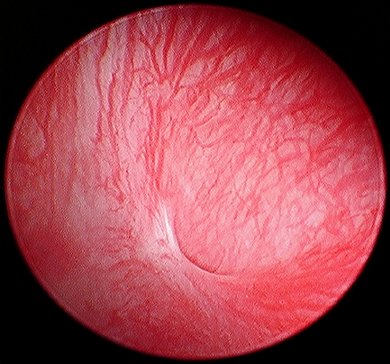 We have two flexible fibre optic and three rigid endoscopes which allow us to visually examine the nose, throat, oesophagus, stomach, upper small intestine, abdomen, bladder, vagina, urethra, larynx, trachea and the large airways of the lungs of most species.
We have two flexible fibre optic and three rigid endoscopes which allow us to visually examine the nose, throat, oesophagus, stomach, upper small intestine, abdomen, bladder, vagina, urethra, larynx, trachea and the large airways of the lungs of most species.
This is a very valuable diagnostic tool for many conditions. In some cases, any necessary surgical treatment may also be performed endoscopically.
The resulting smaller incisions significantly reduce pain and improve recovery time.
Picture: View of an ectopic ureter opening into the urethra using a 2.7mm rigid endoscope. This is a birth defect which causes urinary incontinence. Endoscopic examination is the best way to diagnose and categorise this condition. This case was successfully treated with surgery by the practice.





